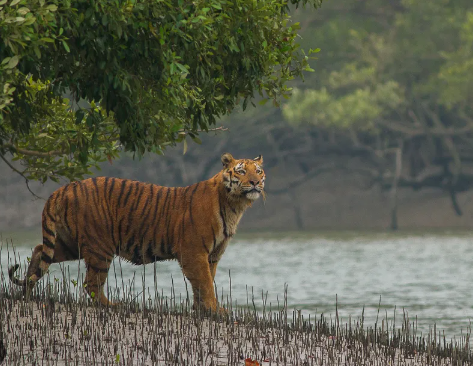The West Bengal Tiger: A Majestic Symbol of Conservation
The West Bengal tiger, often referred to as the Royal Bengal tiger, is not just a remarkable predator but also an icon of wildlife conservation in India. Understanding this magnificent creature’s role in the ecosystem and challenges it faces can inspire efforts to protect it and its habitat.
The Importance of the Royal Bengal Tiger
The Royal Bengal tiger is primarily found in the Sundarbans, the largest mangrove forest in the world, stretching across the banks of the Ganges Delta. This apex predator plays a crucial role in maintaining the balance of the ecosystem. By regulating prey populations, tigers help keep the vegetation healthy, which in turn supports other wildlife. The presence of tigers indicates a healthy ecosystem because they rely on vast territories filled with diverse flora and fauna.
Threats to the Bengal Tiger Population
Despite being a symbol of strength and beauty, the West Bengal tiger faces numerous threats. Habitat loss due to urbanization and deforestation has drastically reduced their living spaces. Additionally, poaching for their skin and body parts remains a significant threat. Climate change also poses challenges, particularly for the Sundarbans, where rising sea levels threaten both the tiger’s habitat and the prey they rely on. Conservation efforts are essential to ensure these majestic animals continue to roam the forests of West Bengal.
Conservation Efforts and Success Stories
Various organizations, including the West Bengal Forest Department and international NGOs, are actively working to conserve Bengal tigers. Efforts include establishing national parks, implementing anti-poaching measures, and raising awareness in local communities about the importance of preserving tigers. Programs that encourage eco-tourism also help support local economies while promoting wildlife conservation. These combined efforts have led to a gradual increase in the tiger population in some areas, showcasing that conservation can yield positive results.
In conclusion, the West Bengal tiger is more than just a beautiful animal; it is a vital part of our ecosystem and a symbol of conservation efforts in India. By learning more about these majestic creatures and supporting conservation initiatives, we can all play a role in ensuring their survival for generations to come. Whether through education, volunteering, or simply spreading awareness, every effort counts in protecting the Royal Bengal tiger and its habitat.

